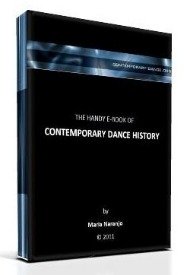Use of space in Sabra and Neil So You Think You Can Dance choreographed by Mandy Moore
by Howard
(No location given)
Concerning Sabra and Neil So You Think You Can Dance choreographed by Mandy Moore, please give me some thoughts on the Rudolf Labans’ movement analysis,like detailed examples of the 9 main zones used on stage?
Also some detailed analysis on their hand gestures and if you think this dance style is Jazz?
Thank you
Howard
Comments for Use of space in Sabra and Neil So You Think You Can Dance choreographed by Mandy Moore
|
||
|
||
The handy e-book of CONTEMPORARY DANCE HISTORY:
The Dance Thinker is our occasional E-zine. Fill in the form below to receive it for free and join us.
Read:
"The Dance Thinker"
BACK ISSUES
Post contemporary dance announcements (workshops, auditions, performances, meetings and important news... it is free.)



